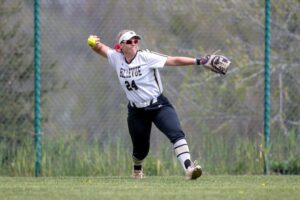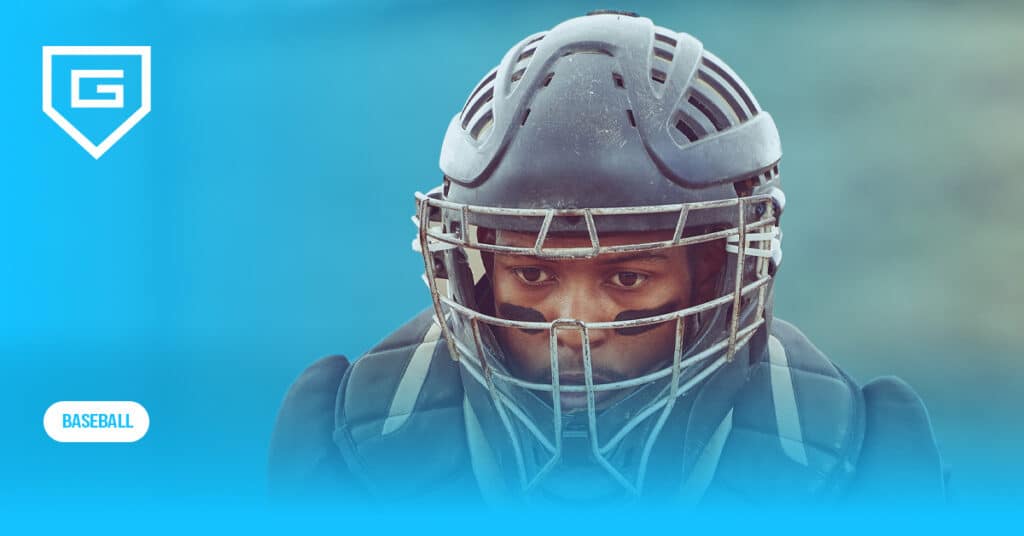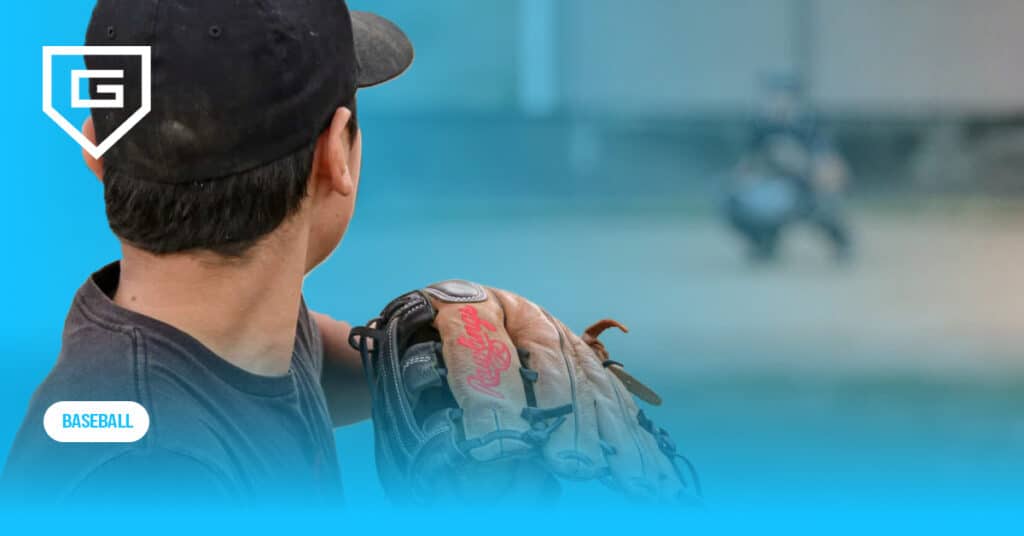NCAA Rules Changes and Updates Over Time
Reading Time: 8 minutes
Reading Time: 8 minutes
Below is a running list of all of the rules changes, updates, and allowances made by the NCAA’s various rules committees. Our intention in compiling this information is to provide a simple, ever-evolving resource for coaches to stay up to date with the newest and latest from NCAA decision makers.
You can receive a notification every time this page is updated with the NCAA’s latest changes by filling out the form on this page.
NCAA Football Rules Changes Over Time
July 16, 2024: Division-3 Liberty League Approved to Use GoRout In-Game for Experiment
A big update after the NCAA Football Rules Committee decided in March that they would only approve helmet communication technology for the 2024 season. Liberty League coaches petition for in-game wearables to be experimented with throughout their 2024 conference schedule to prove viability of technology. An essential project to promote equity among college levels considering the price of in-helmet comms. You can find the full details of the experimentation here, but key points are outlined below:
- “Wearable in-game play calling technology will be used throughout the conference schedule. Each school will be supplied with 10 GoRout Gridiron Player Devices, 2 GoRout Gridiron Sending Tablets and a dedicated 24/7 Customer Service support representative.”
- “No more than 3 devices should be used on the field per offensive or defensive snap; there is no limit to the number of devices that can be on the field during a special team play; devices can be worn in conference competition or out of conference play (if written permission is granted by the opposing out-of-conference opponent); there will be no cut off on the flow of data from player to coach.”
- “Information gathered from the duration of the 2024 conference schedule will outline a process for future recommendations of the product at varietal levels.”
March 1, 2024: Communication Technology Use Rules are Proposed
This is a landmark date. Two weeks ahead of most spring practice start dates, the NCAA Football Rules Committee made a leap towards emulating the same level of tech usage as the NFL. The full details of the meeting can be found here, but the key points are outlined below:
-
- “In games involving Football Bowl Subdivision teams, each school would have the option to use coach-to-player communications through the helmet to one player on the field.”
- “The communication from the coach to the player would be turned off with 15 seconds remaining on the play clock or when the ball is snapped, whichever comes first.”
- “For all three divisions, teams would have the option of using tablets to view in-game video only. The video could include the broadcast feed and camera angles from the coach’s sideline and coach’s end zone.”
- “Teams could have up to 18 active tablets for use in the coaching booth, sideline and locker room. Tablets could not be connected to other devices to project larger additional images and could not include analytics, data or data access capability or other communication access. All team personnel would be allowed to view the tablets during the game.”
- “Committee members also had a thorough discussion regarding wearable technologies.”
In-helmet audio is the first coach-to-player communication that will be used in-game at the college level. We will see its implementation in the 2024 sesaon. Wearable technologies such as GoRout have gained steam from a practice capacity in recent years, and will be discussed further as time goes on.
If you wish to diversify and advance the use cases of available comms in the NCAA, sign our petition for in-game wearable sports technology.
March 3, 2023: Timing Rules Changes are Proposed
The full details of the 2023 Football Rules Committee Meeting can be found here, but key points are outlined below:
- “The game clock will continue to run when a first down is gained. The game clock will continue to be stopped when a first down is gained during the last two minutes of either half.”
- Teams are now prohibited from calling consecutive team timeouts
- Penalties at the end of the first and third quarters will be carried over and enforced on the first play of the next quarter
These small adjustments to timing in college football games were proposed and approved in order to urge the pace of play ahead, and to bring college competition a step closer to emulating the pace of the NFL.
April 21, 2022: Appeals for Second Half Targeting Calls Approved
In an effort to more accurately implement targeting rules which incur a punishment of ejection from the current game, and, in the case of the penalty taking place in the second half, a suspension for the first half of the player’s next game. The targeting rule is explained in the NCAA rulebook across more than 1,000 words, and is one of the most controversial aspects of the game.
The full details of the appeals approval and further playing rules updates can be found here, but the key points are outlined below:
- “In games that have instant replay, when a targeting foul occurs in the second half, the carryover penalty (of sitting out the first half of that player’s next game) will be eligible for further appeal.”
- “If a ball carrier simulates a feet-first slide, officials will declare the runner down at that spot.”
- “Defensive holding will remain a 10-yard penalty but will always carry an automatic first down.”
- “Blocking below the waist [to be allowed] only by linemen and stationary backs inside the tackle box. Outside the tackle box on scrimmage plays, blocking below the waist will be prohibited.”

April 22, 2021: Panel Approves Changes to Football Overtime Rules
With player health and safety in mind, the Football Rules Committee proposed an adjustment to the overtime rules in March of 2021. The Panel approved their proposal a month later, and made a significant enhancement to the time it takes to end an overtime matchup. The full details of the overtime rules change can be found here, but the key points are outlined below:
- “Teams will be required to run a 2-point conversion play after a touchdown when a game reaches a second overtime period. Previously, a 2-point attempt was required after the third overtime period.”
- “If the game reaches a third overtime, teams will run alternating 2-point plays, instead of starting another drive at the opponent’s 25-yard line. This is a change from the previous rule, which started to use 2-point plays in the fifth overtime period.”
- “This rules change is being made to limit the number of plays from scrimmage and bring the game to a quicker conclusion. Teams can still choose whether to kick the point after touchdown or run a 2-point conversion play during the first overtime period.”
Since these adjustments to the NCAA football overtime rules have been implemented, the average number of overtime plays run by teams in OT has been cut in half.
NCAA Baseball Rules Changes Over Time
August 12, 2023: Extra Innings and Varietal Play Rule Updates
Many small adjustments were made to specific playing rules in the 2023-2024 proposals. The full list of adjustments can be found here, but the most significant change was for tied games that go into extra innings:
- To allow, by conference rule or mutual agreement prior to the start of the game, teams to start each extra inning (10th inning in a 9-inning game or 8th inning in a 7-inning game) with a runner on second base.
Rationale: This proposal is permissive and would allow teams to mutually agree to start extra innings with a runner on second base. This would be applicable to all extra innings.
August 12, 2022: Action Clock and Video Review Adjustments
The NCAA has used a pitch clock since the 2011 season, and its success at lessening game times led to the use of a similar pitch clock in Major League Baseball. Though it has been used for over a decade, the rules of its implementation and use continue to evolve:
- “With runners on base, a pitcher will be required to start the motion of throwing a pitch or making a pickoff throw [within the allowed 20-second time] to avoid a clock violation”
- “Pitchers will be allowed one step-off or fake throw to a base per batter to reset the clock.”
- “If a defensive player requests and is granted a timeout by an umpire, it would be treated the same as a step-off by the pitcher to reset the clock. Again, this will be allowed only once per batter.”
- “If the 20-second clock expires without a pitch or pickoff throw being made, a ball will be added to the count.”
- “If the offense violates the 20-second clock, a strike still will be added to the count.”
- “Umpires can initiate video reviews to see whether malicious contact or misconduct occurred. Umpires will also be able to initiate reviews regarding catcher’s interference.”
The primary adjustment to action clock rules is the immediacy of penalty for violation. In the past, pitchers and batters were allowed a warning before a ball or strike was counted against them for violating the rules.

August 12, 2021: One-Way Electronic Devices Approved for Use
This was the first wave of wearable pitch and play calling technology on a college-wide scale. Certain conferences had experimented with in-ear audio communication tech before this, but the NCAA Playing Rules Oversight Panel made the following changes for the ’21-’22 season:
- “The NCAA Playing Rules Oversight Panel on Thursday approved allowing the use of one-way electronic communication devices for the purpose of calling pitches and plays.”
- “Teams being allowed to use an electronic display board from the dugout that shows a numerical code to call pitches and/or defensive plays. Teams also can use a one-way in-ear communication device that would be limited for use from the dugout to the catcher.”
This decision paved the way for systems like GoRout Diamond to help teams secure their communication and improve upon the game’s pace of play.
NCAA Softball Rules Changes Over Time

August 11, 2023: Softball Pitchers Can Disengage From the Playing Surface
It was previously outlined in the rules of softball that a pitcher’s pivot foot must maintain contact with the ground through the action of executing a pitch. This rule update allows for both feet to leave the ground while making a pitch; a move that many believe will allow for greater power to be added to pitches. A full outline of all rules changes in 2023 can be found here. The pitchers disengagement rules changes read as follows:
- “The NCAA Playing Rules Oversight Panel approved a new rule allowing both feet of pitchers to disengage from the playing surface during their delivery when pushing off the pitcher’s plate.”
- “A pitcher’s pivot foot can become airborne with one push from the pitcher’s plate. However, pitchers will not be allowed to replant their pivot foot, resulting in pushing off from a second point and the pitcher being farther away from the pitcher’s plate.”
- “NCAA Softball Rules Committee members think whether the pivot foot stays in contact with the ground or is airborne, there is no advantage gained by the pitcher.”
August 18, 2022: Double First Base Experiment
As youth and higher levels of fast-pitch softball have displayed success in implementing a double first base for player safety, the NCAA announces its approval for game-by-game use on a mutual agreement basis. The full list of rules changes made in 2022 can be found here. A brief outline of the double first base rule is below:
- “The experimental rule, which was approved by the NCAA Playing Rules Oversight Panel earlier this month, allows the fielder to use half the base and the batter-runner to use the other half.”
- “Both teams will have to agree to use the double first base during regular-season spring games or fall competitions played in the nontraditional season. Base specifications and specific rules on how to use the base will be included later as part of the experimental rule.”
- “Schools that choose to use this experimental rule must submit a waiver request and collect specific data points that will be outlined by the NCAA Softball Rules Committee.”
August 13, 2021: Video Review Challenges Approved
Following decisions made by college baseball and the professional ranks, college softball elected to implement its first iteration of video review in 2021. The full list of rules changes made in 2021 and an extensive outline of plays that are eligible for review can be found here. The key point of video review allowance is outlined below:
- “There is no requirement to use the video review rule. It is optional for all schools, conferences and tournaments to implement.”
- “Each head coach will have two challenges to initiate a review for the entirety of the game.”
- “A coach must verbally or visually indicate a challenge request before the next pitch, before the pitcher and all infielders have clearly vacated their normal fielding position and left fair territory, or before the umpires have left the field of play.”







